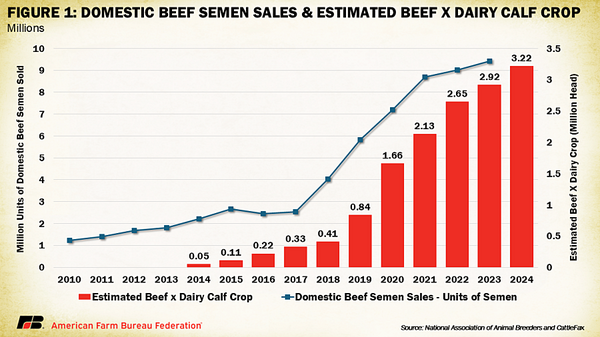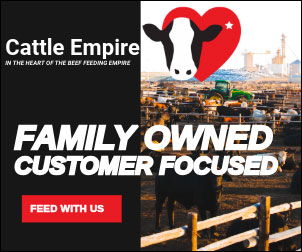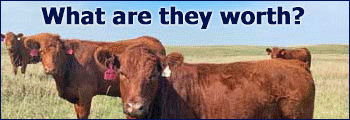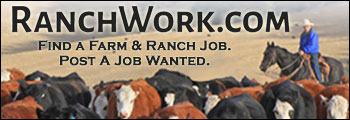Beef-on-dairy crossbreeding is the latest step in the evolution of dairy genetics and is now a key driver of the U.S. supply of both beef and dairy cattle. Some 72% of dairy farms are now incorporating beef genetics into their breeding programs, enhancing the marketability of dairy-origin calves by improving carcass quality and feed efficiency -- traits highly valued by feedlots and packers.
Crossbreeding, along with the widespread use of sexed semen, is helping stabilize beef supply while creating a reliable revenue stream for dairy producers. This article examines the rapid expansion of beef-on-dairy crossbreeding and its growing economic influence across the dairy and beef industries.
Background: A Shift in Breeding Strategies
Historically, dairy farmers bred their herds using dairy bulls in the herd, ensuring a steady supply of replacement heifers. Bulls were otherwise unable to contribute to milk production but made up about half of the calves born, so all but the best were sold into the beef market for veal, since they otherwise held little value in the beef market due to their lighter muscling and lower-quality carcass traits. The introduction of artificial insemination (AI) in the mid-20th century revolutionized dairy breeding, allowing farmers to access superior genetics without the need for on-farm bulls -- except for "clean-up" to ensure all cows are bred.
This innovation allowed producers to improve milk yields and herd efficiency while reducing the logistical and safety challenges associated with housing and maintaining bulls. During this period, breeding efforts remained centered on dairy genetics to enhance milk production, while surplus male calves continued to be sold for veal, which was falling out of favor with consumers.
To read the entire report click here.
Source: Daniel Munch, Economist, American Farm Bureau Federation










